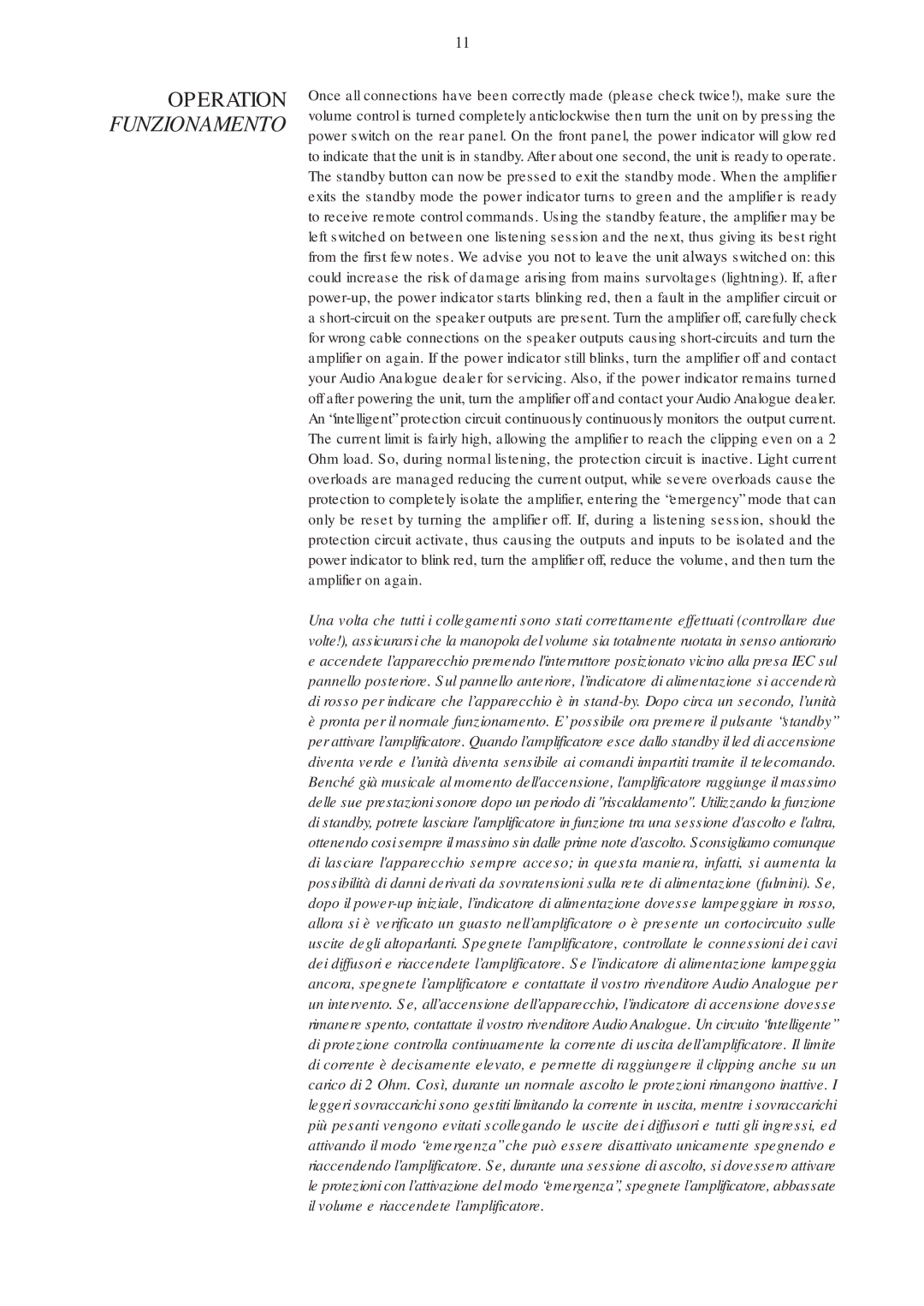soundpleasure MAESTRO INTEGRATED AMPLIFIER specifications
The Audio Analogue SRL Soundpleasure Maestro Integrated Amplifier stands as a testament to the perfect marriage of design, performance, and functionality in the realm of high-fidelity audio equipment. This amplifier caters to audiophiles who desire both robust sound quality and an aesthetic presence in their audio setups.At the heart of the Maestro Integrated Amplifier lies a powerful Class A/B amplification circuit, renowned for delivering high output power with low distortion across a wide frequency range. This design choice ensures that the amplifier can drive a variety of loudspeakers with ease, offering the headroom necessary for both dynamic peaks and quieter passages in music. With an impressive output of up to 100 watts per channel, the Maestro can fill any room with rich, detailed sound.
One of the standout features of the Maestro is its innovative digital-analog converter (DAC). The built-in DAC allows for seamless integration with digital sources, converting high-resolution audio files with precision. Support for a range of sampling rates ensures that users can enjoy music from various digital formats without compromising quality. This versatility is further enhanced by the inclusion of multiple input options, catering to both analog and digital sources.
The design of the Maestro reflects Audio Analogue's commitment to craftsmanship. The chassis is constructed from high-grade materials that not only enhance durability but also help in minimizing unwanted resonances. The aesthetic appeal is heightened by the clean lines and intuitive layout of the controls and indicators, making it as pleasing to the eye as it is to the ear.
Moreover, the Maestro Integrated Amplifier incorporates advanced circuitry designed to reduce noise and interference. This ensures that every note played is rendered with clarity and precision, allowing listeners to experience their favorite music as intended by the artists.
For those who value customization, the Maestro includes features such as a remote control and options for impedance matching, offering flexibility to audiophiles. The amplifier also supports bi-wiring, allowing users to connect their speakers in a way that maximizes performance.
In conclusion, the Audio Analogue SRL Soundpleasure Maestro Integrated Amplifier is not just another piece of audio equipment; it is a carefully engineered solution for those who appreciate sound quality and elegance. With its powerful amplification, advanced DAC capabilities, and aesthetic design, it stands as a cornerstone product for serious music lovers and collectors seeking an immersive listening experience.
